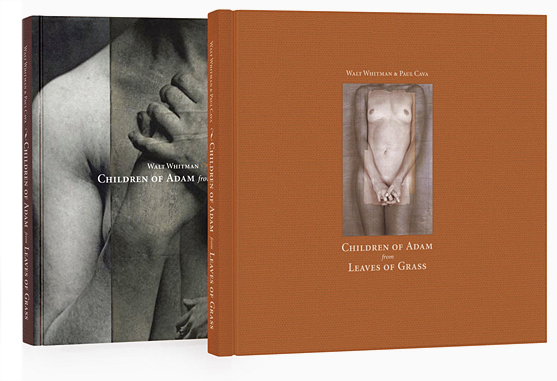
We as a Culture Are Afraid of Love | by ARDEN KASS
… its anarchy, its impermanence, its disrespect for schedules, contracts and all other artificial restraints that cast the illusion of control. Glancing at watches and cell phones, we speed throughlife trying not to touch or be touched too deeply. Nevertheless, in music, movies, poetry and self-help seminars, we claim to crave something deeper, wilder and more authentic. But why this dichotomy, this constant struggle? Is it innate to human nature, a kind of psychic dynamism we need to propel us through life? Or evidence of fatal errors in our version of civilization?
Luckily, it’s not my job in this brief afterword to pinpoint how or why or when we evolved into our current conflicted, unsatisfactory state. Instead, I offer an alternative. An opportunity to delve into the genuine delight in imagery, in sensuality – in the interplay of hard surface and soft flesh, the polarities of yielding and withholding, of embrace and release, of satisfaction and longing, male and female, that exist without limit in the art of Paul Cava.
Surrounded by the elegantly realized but powerfully graphic images that breathe from every surface in Cava’s studio, it is clear that no image communicates more profoundly with whatever is most genuine in each of us than the sight of the naked human body in all its awkwardness, vulnerability and beauty.
Distilling both our yearning for total submission to love and our distrust of our own erotic nature, these meticulously conceptualized collages function as visual haiku, evoking a series of poignant, yet ultimately illuminating reflections on where we stand right now in relation to our physical bodies, to the hearts inside of them, and to each other.
Literate, yet non-linear, refined, often playful, Cava’s art shares a sense of mystery with Andre Breton’s richly imagistic poetry and with Man Ray’s startlingly coherent disturbing objects. At the same time, the artist’s personal journey from poet to film maker, photographer, painter and dealer in fine art and photography lends a palpable authority, a dimension of historical inevitability to the disparate images he unites.
It is in a sense, as if all of the great works that have passed through Cava’s eyes and hands are somehow present in the images he physically selects for each work. In the artist’s own words, “It’s not so much what we see, but the context in which we see it that gives it meaning.”
Using photographic images (many of his own making) as raw material, juxtaposing them with found materials – scientific illustrations of birds, pages from handwriting primers, geological site maps and postcards rescued from the archives of vintagepornography – Cava layers the visual surface with information which may or may not be narrative, which may tell a story in itself or contribute a note to the measured unfolding of a perception. At times transforming antique images, at times creating an illusory patina of age atop a contemporary image, he calls into question both the process of perception and the concept of permanence, simultaneously seducing and challenging our senses.
In one exquisitely lovely and haunting image, “Sylvia (Untainted)”, spidery handwriting from a vintage primer overlays a photograph of a woman’s bare torso, seemingly etching the history of her attempts at intimacy into her undefended skin. In another use of the same photograph (not included in this exhibit) a superimposed site map divides the woman’s body into neat quadrants; the contrast of the geometric grid over the woman’s lush topography suggests either a plan for conquest or a failed attempt to rationalize or otherwise limit the power of desire.
An equally tantalizing (and disturbing) work “Bird Dream” presents a bird fluttering over a pair of exhausted lovers, the path of its flight grazing both the exact locus of their pleasure and the sheets of handwriting that hover above their bed. Their moment of rapture instantly mythologized and simultaneously flown, the corrosive marks of time and memory already appearing, they and we are left with only a persistent, insatiable craving –to return, to understand, to reconnect.
Throughout this show, in fact throughout this artist’s oeuvre, his work celebrates both the universality of human experience and its specificity. In its reverence for “the happy accident”, its quest to transcend the boundaries of time and place, to distill the emotional resonance of an image or a moment, his art asks us to put aside the critical faculties, to open ourselves to the grandeur and the depth of feeling within each of us.
Perhaps the greatest breakthrough in this particular body of work is that Cava achieves not only a seamless technical fluidity, but an ability to manipulate imagery and association with a delicacy of touch, a generosity of spirit and a tenderness for the absurdity of our predicament that come only with artistic and personal maturity.
Indeed, it is nearly impossible to stand before the naked images in this body of work and not feel naked as well, for in their purity and integrity, in their own vulnerability and humanity, they reach beyond our carefully tended boundaries and touch the part of us that despite its own better judgment, loves and lives for love.
Writing this in the bleak aftermath of the destruction of the World Trade Centers, it is tempting to ask what place art, especially art that dares to be beautiful, can possibly hope to occupy in our lives. And yet, Cava’s ability to synthesize past and present, beauty and destruction, history and imagination, gives us the freedom to believe, if only for the moment of contact with his work, that in allowing ourselves to fall, we too may be given wings.
September 2001
